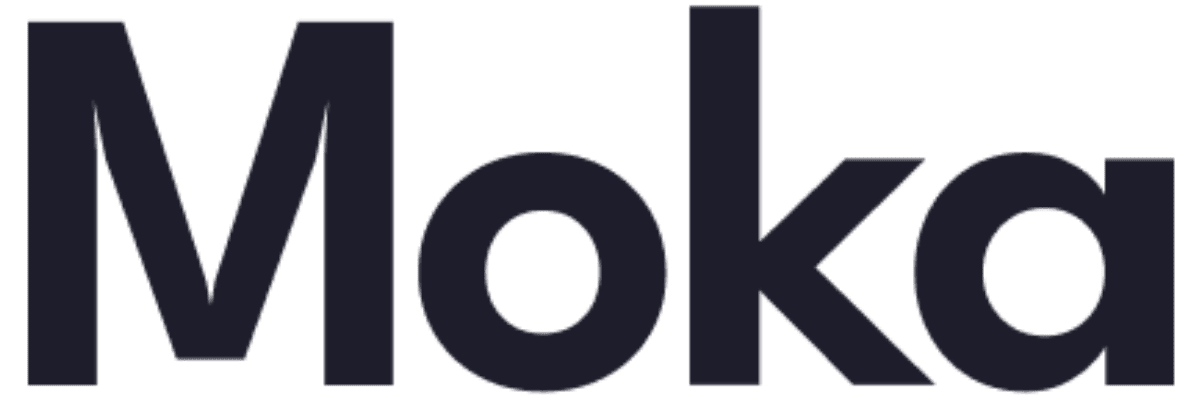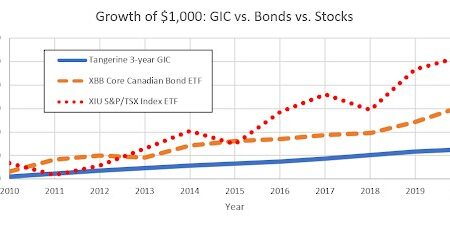Moka App Review 2026
Moka Review Summary:
-
Ease of use
-
Fees
-
Number of Account Types
-
Simplicity
-
Investment Portfolio Options
-
Customer Service
Moka (Formerly Mylo) Review Summary:
With many recent changes to Moka’s features, a 2026 Moka App Review is due! The main premise of the app hasn’t changed though: Moka still assists you in investing small amounts on the regular by rounding up your spare change and allowing you to make sporadic or scheduled deposits.
Moka is simple to use and has 5 different portfolios for various investing risk levels. You can invest in your TFSA, RRSP, or a non-registered account. It does, however, cost $15 a month, and has recently fallen out of favour with some long term users due to issues with the roundup feature not working reliably.
While the Moka app is safe and has some major appeal for new investors as a way to get started making regular investment contributions, one of the Best Robo Advisors in Canada would be a better bet. Wealthsimple, for example, has a $0 minimum and an equally user-friendly app that makes it easy for anyone to invest and earn
In our Moka app review, you’ll find out how Moka works, what features it offers, and how it compares to other automated investing services.
Pros
- Easy to set up and use
- Useful way to utilize your spare change
- Makes investing painless even for people who have trouble saving
- Very quick withdrawals (next business day)
- Safe to use
Cons
- Costs $15 a month + MERs
- Not enough account options
- Fees are quite high unless you contribute a lot
- Not useful for larger investments
- Limited and slow customer service
- Many users reporting issues with roundup feature
What Is The Moka App?
Are you looking for an easy way to save money or build an emergency fund? If you have trouble building your savings each month, Moka can help you get started.
Moka is a well-designed app that lets you begin investing without much effort. The team at Moka understands that getting started on your investment journey is the hardest part. They also know that once you get started, it can be easy to create wealth building and money saving habits. So, they created an app that allows you to save and invest without really noticing!
How does Moka work and is it worth it? Our Moka review lays out all the facts and then puts the app head-to-head against our most recommended robo advisor to see how it stacks up.
How Does Moka Work?
“Moka invests for you and helps cultivate stronger wealth-building behaviours for superior outcomes.”
Sounds great, but how does it work?
It’s actually pretty easy. Once you download the Moka money app, you’ll be able to connect it to your debit and/or credit card. Then, when you use it, the Moka app will round up your everyday purchases and invest the spare change for you (although you can choose to disable/enable this feature at any time).
For example, say you go to Starbucks and order your favourite coffee. The total comes to $4.15. Moka will round up that bill to $5 and take that extra $0.85 and invest it for you. Sure, $0.85 may not seem like a lot, but if you order that same coffee every single day, that’s $310.25 you’ve saved up in a year from your morning coffee alone. Not too bad!
Moka also gives you the option of adding a multiplier to that spare change (so if you activate it, that $0.85 you just invested from your morning coffee becomes $1.70, $2.55, or even $6.80 depending on your chosen multiplier, and that $310.25 is suddenly $620.50, $930.75, or $2,482 – with precisely zero additional effort from you).
Unfortunately, many users have recently reported problems with the roundup feature. With banks requiring various levels of authentication, it seems that the connection between users’ banks, and their Moka accounts often falters, resulting in the roundup feature not working.
Some users have figured out how to maintain the connection, while many other long term users, frustrated, have left the app altogether.
We’ll get into more of their features shortly, but what you need to know for now is that Moka uses the power of rounding up to make investing stress-free and painless.
Maybe you want to invest your spare change plus some? If so, Moka has some additional investment contribution features:
- Boost: a specific one-time contribution
- Recurring Contribution: contribute a fixed amount weekly
Moka app definitely makes investing hassle free.
How Much Does it Cost?
Moka pricing is objectively affordable, charging users a monthly fee of $15. However, let’s not forget that there are robo advisors available to Canadians that are free!
Moka’s basic tier includes:
- Automated saving features (roundup from daily purchases)
- Weekly automated or one-time investment deposits
- Unlimited tax-free investment accounts
- Access to the Moka Wealth Calculator
Moka previously offered a premium tier called Moka 360. This tier cost $15 per month and gave users additional features including:
- Access to personalized financial advice
- Customized debt plan
- Double cashback on Moka Perks when you shop via the app
The only current mention of Moka 360 on their website is, “We are revamping our Moka 360 service, therefore it is currently not available for new customers as of January 27, 2024.”
How to Get Started with Moka
Opening an account with Moka is easy and can be done in 4 simple steps.
- Download the app.
- Create your account. Moka will ask you to answer several questions designed to determine your financial goals and risk tolerance. This takes less than 5 minutes
- Link your bank and debit and/or credit card to the app.
- Use the app when you shop and watch your savings and Moka investment returns grow! You also have the option to set up recurring deposits, or just add random deposits at any time.
Moka App Features
While it’s not a robo advisor or a DIY trading platform, Moka does offer a number of features for investors.
Moka Investing Account Option
You can choose from either a TFSA, RRSP, or non-registered account for your Moka savings. Your spare change and planned deposits are automatically invested into a diversified portfolio of ETFs, meaning that you can sit back and watch your savings grow without having to lift a finger.
Moka Investment Portfolio Options
There are five different portfolio options depending on the level of risk you want to take:
- Cautious Income (100% Moka Money Market ETF)
- Balanced Income (30% Moka Money Market ETF, 70% Moka Fixed Income ETF)
- Balanced (50% Moka Fixed Income ETF, 50% Moka Equity ETF)
- Balanced Growth (30% Moka Fixed Income ETF, 70% Moka Equity ETF)
- Equity Growth (100% Moka Equity ETF)
Their portfolios use a mix of stocks, bonds, and savings fund ETFs. They’re managed by registered Canadian portfolio managers at Mogo Asset Management Inc., which is a subsidiary of Mogo Finance Technologies Inc.. Mogo Finance Technologies Inc. currently manages more than $300 million in assets.
Moka previously offered a Socially Responsible Investment (SRI) option, but instead, now donate to a reforestation project with every successful weekly transfer.
Moka ETF Selection
Moka invests your money in a selection of 11 ETFs:
| ETF | Ticker | MER |
| Purpose High Interest Savings ETF | PSA | 0.17% |
| CI High Interest Savings ETF | CSAV | 0.16% |
| High Interest Savings Account Fund | HISA | 0.15% |
| Horizons Cash Maximizer ETF | HSAV | 0.20% |
| Vanguard Canadian Aggregate Bond Index ETF | VAB | 0.09% |
| BMO Aggregate Bond Index ETF | ZAG | 0.09% |
| Vanguard U.S. Aggregate Bond Index ETF (CAD-hedged) | VBU | 0.22% |
| Vanguard Global ex-U.S. Aggregate Bond Index ETF (CAD-hedged) | VBG | 0.39% |
| Vanguard S&P 500 Index ETF | VFV | 0.09% |
| BMO S&P 500 Index ETF | ZSP | 0.09% |
| Horizons S&P 500? Index Fund | HXS | 0.10% |
These ETFs are combined to create 3 Moka funds. The Moka funds are then combined to create a portfolio that matches your risk tolerance (as seen in the previous section).
It’s not the widest selection of ETFs we’ve seen. However, they’re offered by reliable management companies. Vanguard, for example, is highly regarded as an industry pioneer and has over 50 million investors worldwide.
You can read more about these and see how they compare in our best ETFs in Canada article, or this Vanguard ETFs breakdown guide. In addition to Vanguard, both BMO and Horizon are featured in our top all-in-one ETFs.
Moka App Extra Features & Benefits
Moka’s recent overhaul includes a few new features:
- gamification with a weekly “streak” feature. Each successful weekly contribution adds to your streak for a visual representation of your commitment to investing.
- a “Wealth Calculator” that you can use to project your future wealth based on contributions. This data can then be used to set your investing goals within the app.
- a referral program! $10 for you, and $10 for a friend when they use your referral link.
Is Moka Safe to Use?
Like with any other financial app or online tool, people will question whether or not Moka is safe. The simple answer is yes – as safe as any investing product can be.
Moka uses the same security measures as Canada’s major banks which includes 256-bit encryptions, SSL connections, and strict security policies. They’re IIROC regulated and your funds are held by a custodial institution that’s CIPF insured.
While nothing online is ever 100% safe, Moka is certainly committed to protecting you and your money. The biggest risk factors you’ll contend with are the inherent risks in investing (and if they keep you up at night, then consider a conservative investment portfolio!).
Moka or Wealthsimple?
We always like to put our reviews into context, and our Moka review is no exception. We put Moka head-to-head with our most recommended robo advisor, Wealthsimple Invest, to see how it stacks up.
Moka | Wealthsimple Invest | |
App/Management Fees | $7/month | 0.4-0.5% annually |
MER | 0.09-0.39% | 0.12-0.15% standard and 0.23 SRI |
Investment Options | 11 ETFs combined into 3 Moka funds | ETFs (10 standard ETFs plus 2 SRI, 1 Halal) |
Minimum Investment | None | None |
Portfolio Options | 5 portfolio options | 9 portfolio options |
Account Types | TFSA, RRSP, unregistered | RRSP, Spousal RRSP, TFSA, LIRA, RRIF, LIF, RESP, unregistered |
Safety | Custodian is CIPF insured, IIROC member, Bank-level security | Custodian is CIPF insured, IIROC member, Bank-level security |
Customer Service | Help available via the in-app chat or via email | Live help available via chat or phone 9am to 6pm ET on weekdays |
Additional Services |
|
|
Promo | $10 for you + $10 for a friend when they sign up using your referral link | $50 in Free Cash |
Sign Up |
There are plenty of similarities between Moka and Wealthsimple Invest. Both are safe, offer a variety of accounts and portfolios, and both invest using ETFs. Wealthsimple even offers a service called Roundup which (you guessed it) rounds up your purchases to the nearest dollar and invests the change.
However, the table makes it clear: Wealthsimple Invest simply offers investors much more: more account options for investing, and many more additional services. They also offer Socially Responsible Investment (SRI) and Halal portfolios. And they do it for significantly less in fees.
Moka vs. Wealthsimple: Fee Structures and Savings
Figuring out whether Moka is worth the fees is really a numbers game. After all, $7/month for the basic account seems pretty reasonable, right?
Sure, $15 is less than you’d pay for a fancy latte these days, but how does it work out percentage-wise, and how does it compare to Wealthsimple? Let’s look at a few scenarios:
Scenario 1: Minimal savings using Moka
Moka costs $15/month. That’s $180/year.
Now, let’s say you save $25/month which is $300/year. To figure out the “management fee” of Moka you’ll divide the annual costs by your annual savings. So, 180/300 = 60%.
But wait, there’s more! Moka’s ETFs (like most ETFs) also charge an additional MER (Management Expense Ratio) of up to 0.39% of your invested funds. That means your 60% is actually even higher!
A 60% management fee is high. Painfully high. Not only can you do much better with another automated investment app, you can also do much better with a typical mutual fund (and given that Canada has some of the highest mutual fund fees in the world, that’s saying something).
But how does the math look if you invest significantly more each month?
Scenario 2: Increased savings with Moka
Say you manage to save $300/month, for an annual total of $3,600.
180/3600 = 5%, which is a great rate and, therefore, makes Moka a better deal than if you only save $25/month. Even if you add, say, a 0.3% MER, you’re still looking at 5.3%, which is lower than typical big bank mutual funds. And that’s something we like to see.
Hooray! Now you’re paying a reasonable rate on your investments. But is it better than what you’d pay with Wealthsimple Invest? Let’s break it down:
Scenario 3: Moka and Wealthsimple Invest Fees Compared
Take your hypothetical $3600/year and invest it using Wealthsimple Invest. Wealthsimple’s fees are 0.5% plus an MER that ranges from 0.12 to 0.15% for standard (non-SRI portfolios), for a possible total of 0.62-0.65%
.…annnnd we don’t even have to do the rest of the math. 0.62 – 0.65% is less than a third of what you’d pay to invest the same amount with Moka. And you already know that it includes a greater selection of ETFs, more account options, and a roundup option like Moka has.
It’s possible that you could eventually grow your portfolio to such an extent that you’d actually save on fees with Moka—but at that point you’d probably want to take advantage of the extra features that Wealthsimple offers.
That’s not to say that Moka is a bad choice, though. It’s not. We appreciate any app that gets more Canadians investing, even if they’re paying higher fees.
If you continually struggle to put money aside, or if the idea of an investment strategy freaks you out, then Moka may be an option for you. It does the work for you and is a nice little automated solution. If you’re choosing between doing nothing and using Moka, you’re much better off going with Moka. Please use Moka in that case. (We worry.)
However, if you’re ready to get serious about growing your savings, Wealthsimple Invest is the much better choice.
Moka vs. EQ or Neo?
Or, are you simply looking for somewhere to start saving spare change for use in the short term? Are you saving up for school, a wedding, a house, or a vacation, or building an emergency fund?
If so, a High Interest Savings Account (HISA) from EQ Bank or Neo Financial may be the way to go! With a HISA you will receive predictable growth on your contributions.
Putting your money in a HISA would be comparable to Moka’s “Cautious Income” Portfolio, but you wouldn’t be paying Moka’s $15/month fee or MERs. Both EQ and Neo’s HISAs have no monthly fee and offer interest rates of 4%.
Neo Bank also has an investing feature, called, “Neo Invest”: digital investing with the expertise of registered portfolio managers. Portfolios are selected based on your risk level and are constructed using globally-diversified ETFs. You can set up your portfolio with a TFSA, RRSP, or personal account.
The fees here hurt, however. You’re charged 0.75% annually on your account value, and then the MERs are high in the range of 0.4%-0.5%. This is much higher than what you’d pay with Wealthsimple, especially as you invest more. In comparison to Moka, the account fee will be less up until you’ve invested over $11,000, but the MERs will always be higher. Again, Wealthsimple comes out as the best low-cost investing option.
The HISAs are great options for people who are getting started with saving or don’t have a long term horizon for when they’d like to access the funds. If this is the situation that you are in, then check out our reviews for the Neo Money Account and for EQ Bank as they might be what you’re looking for. Best of all, there are zero account fees!
Moka App Review FAQ
Moka Canada Review: Final Thoughts
As Moka starts investing for you via the roundup feature, it is an effective way to start investing if you’re struggling to save. Moka also leans on behavioural science by rewarding you with a weekly streak (and the planet with more trees!) when you do weekly contributions. With either feature you’ll be on your way to an emergency fund, growing your investments, and working towards your financial goals.
Moka may be a good option for younger, less experienced investors. In fact, one quick look at their website and social media makes it clear that their target users are millennials. So, if you fit into that demographic, the Moka app could be a good choice. But, if you’re hoping for your contributions to go further faster without being eaten by fees we’d suggest one of the competitors.
While there are many positives to our Moka App Review, if you’re looking to take a step further into the world of investing and choose your investments, Wealthsimple is likely the better option.











I joined Mylo when they first started up. Great app! Saved a lot of money and had a lot of control over my money then it changed to Moka. All of a sudden I was being charged a monthly fee that I had never been charged before. I tried to close my account. Deleted the app. Months and months later, they are still charging the fee every month. It is still coming out of my bank account. Even though I have no more money invested with them, they keep charging me. How is this legal?!!
My bank a credit union offers spare change account. We’re it rounds up my transactions into another account. Fee is same. (Doesn’t link to my credit card ).
Has this been resolved?